Some of the earliest buildings in Venice didn’t last very long. Only a couple of years. That’s because they were built on islands of soft mud. Then some engineers in Venice came up with an idea. Drill wooden posts and columns deep into the mud, top them with cement slabs and build on top of that. A dozen or so centuries later, the buildings are still there. Timeless examples of Venetian architecture, standing strong against the elements.
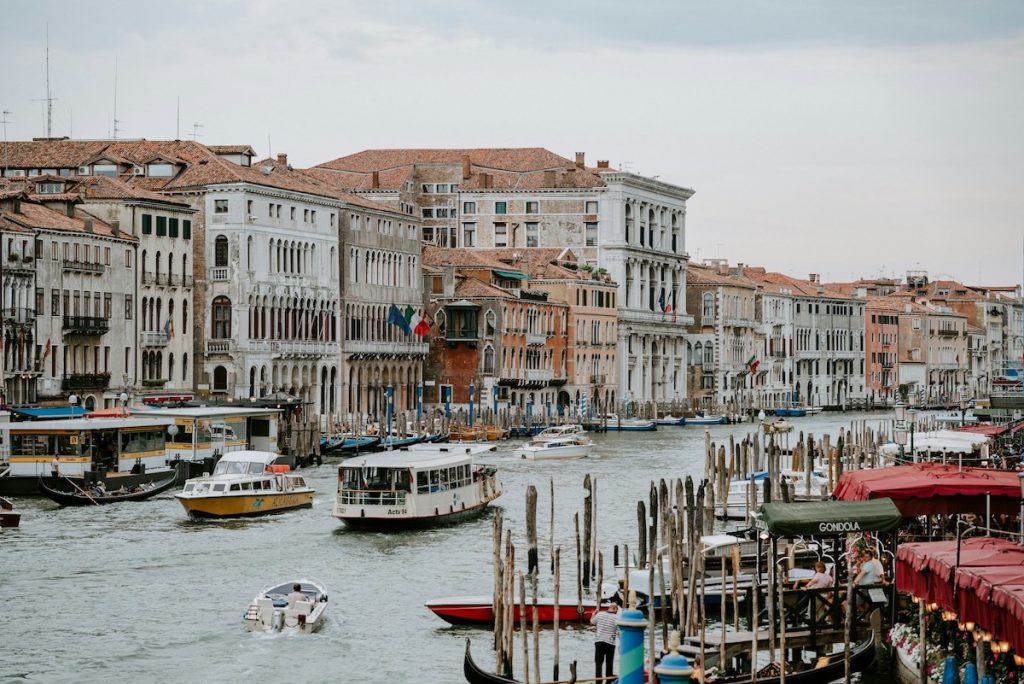
Venetian architecture is stunning, but because this iconic city is navigated by canals, the waterways tend to overshadow the buildings at times. It’s now time to amble around this city of water and bridges looking up at the awesome Venetian architecture.
And while you’re strolling around, it would help to tag along with a local who happens to know a thing or two about Venice, in general, and architecture, in particular. Right? Right. A small-group guided walking tour might be right up your alley. Or, um, canal. The local guide regales visitors with entertaining and intriguing historical anecdotes. They put Venice’s history and its architectural splendors into a historical context—especially the evolution of Venetian architecture through the centuries.
Here’s a primer on what you might see and learn about Venetian architecture.
St. Mark’s Basilica (La Basilica di San Marco)
In the year 553 CE, Venice and the rest of Italy came under the control of the Byzantine Empire, which ruled from Constantinople (later known as Istanbul). In the ninth century, after the Venetian Republic was established, Venetian merchants pulled off a miracle. They smuggled the body of St. Mark out of Alexandria and brought it back to Venice. And with that, the city needed a church that would befit such a renowned saint and man who would become the patron saint of Venice.
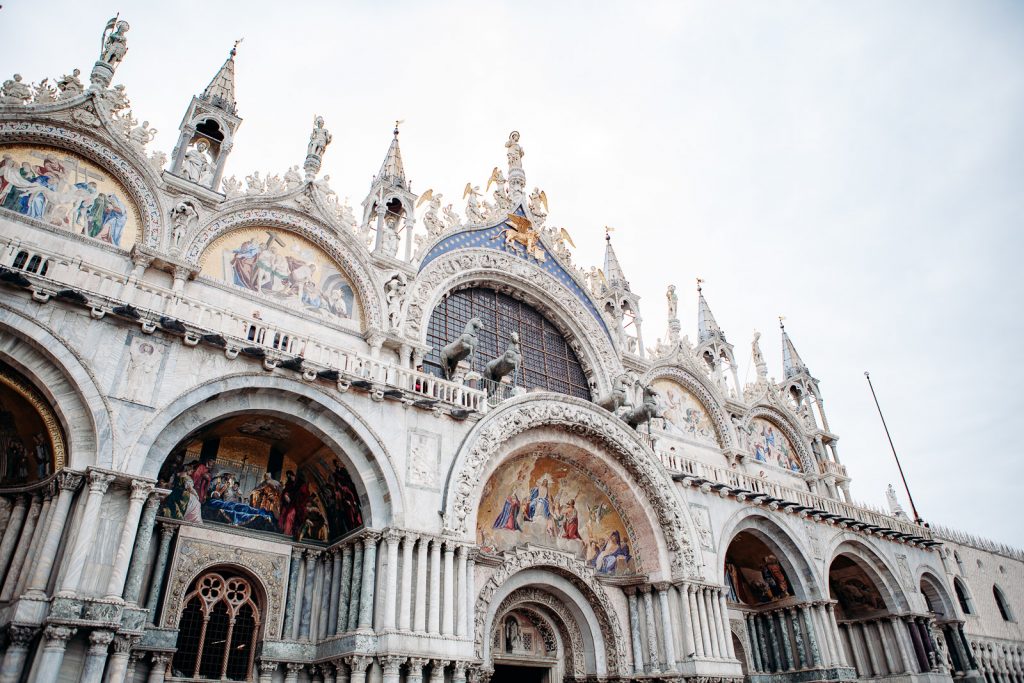
St. Mark’s Church, which stands on the eastern side of Piazza San Marco (St. Mark’s Square), took its current form in 1083, and its design clearly draws inspiration from Byzantine architecture. In fact, the builders modeled it on a larger scale after the fourth-century Church of the Holy Apostles in Constantinople
Along with its multi-domed roof, St. Mark’s also shows eastern influence through its layout in the form of a Greek cross, rather than a Latin cross like most other churches in western Christendom. If you step inside during your stay in Venice, you’ll see vast Byzantine-style murals covering the walls—a signature feature that makes St. Mark’s one of the crown jewels of Venetian architecture. For a closer look, consider booking a nighttime, after-hours tour of the church’s interior.

St. Mark’s Square (Piazza San Marco)
Saint Mark’s Square ranks among the most iconic public spaces in Europe. Piazza San Marco showcases some of the greatest examples of Renaissance architecture in Italy. Architects designed the arcades in perfect rhythm, symmetry, and proportion—foundations of Renaissance architecture that they explicitly lifted from and drew inspiration from the art and architecture of Greek and Roman antiquity.
Within the square, visitors encounter some of the most iconic works of architecture in Venice. The Doge’s Palace housed the Doges, whom Venice’s noble families elected as officials. Builders constructed the 14th-century palace in the Venetian Gothic style, featuring intricately pointed arches. This Gothic style forms a core element of Venetian architecture, blending eastern and western influences in a way unique to Venice. Directly across from the Doge’s Palace, the Biblioteca Marciana stands as a Renaissance palace that builders completed in 1537. The building features rounded arcades on the facade and marble sculptures crowning the top. Sculptors crafted them, like most Venetian buildings, from Istrian marble (which now lies mostly in Croatia, with small portions in Slovenia and Italy).
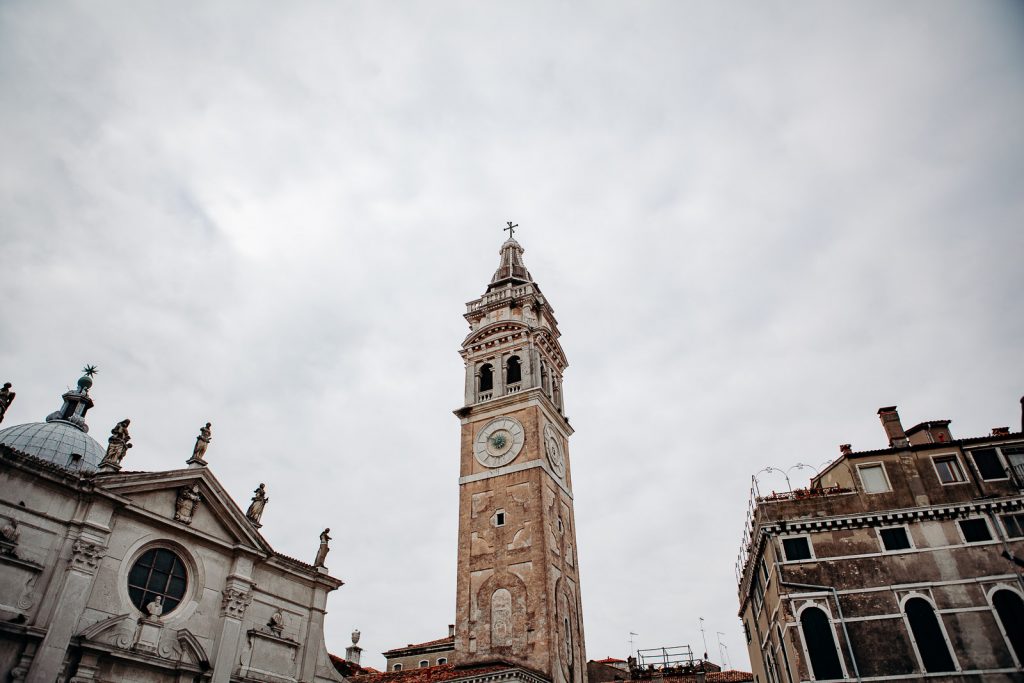
House of Marco Polo
The supposed house of medieval traveler Marco Polo is in the district of San Giovani Crisotomo, not far from the famed Rialto Bridge. It’s said that Marco Polo lived here for 25 years until his death in 1324. You’ll have to use your imagination when dreaming up a picture of the great explorer coming and going from the house since the original building burned down in 1596. The only part remaining is the gorgeous archway, a typical Veneto-Romanesque design. While not as grand as other examples, this archway offers a glimpse into the everyday side of Venetian architecture—practical, adaptive, and always beautiful.
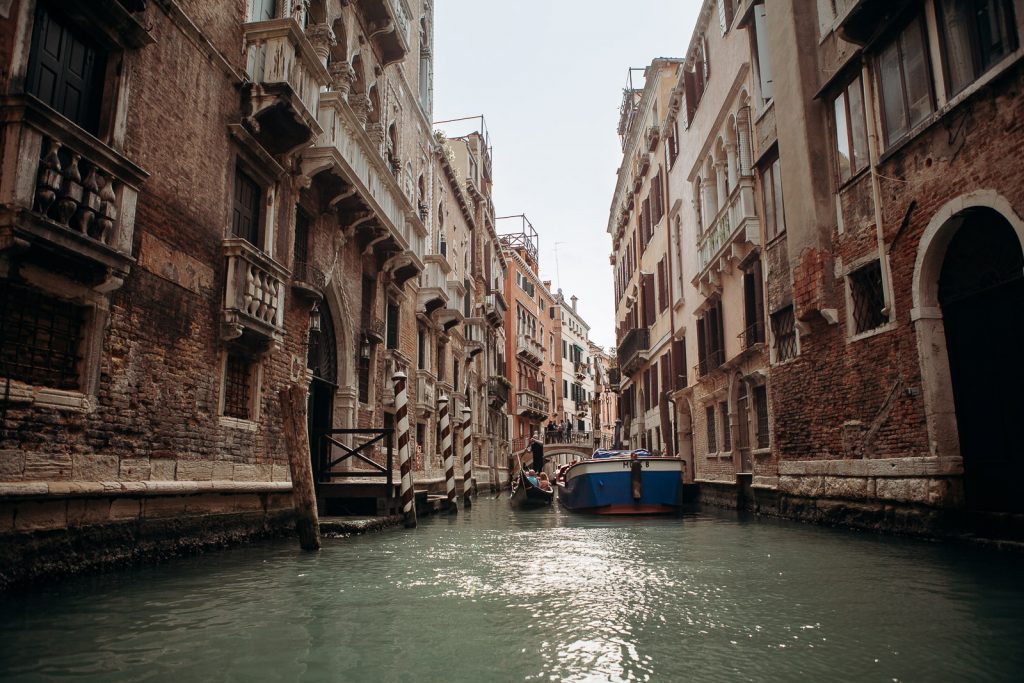
Saint Mary of the Miracles (Santa Maria dei Miracoli)
Santa Maria dei Miracoli stands as one of the best examples of Venetian Renaissance architecture. Builders constructed it in the late 15th century specifically to house a miracle-giving icon of the Virgin Mary. The image of the Madonna originally appeared on a nearby street, but after people attributed several miracles to it, Church and civic leaders decided to build a church in its honor. The church’s semi-circle pediment on the facade and the three bulbous domes at the back reflect how Venice continued to draw influence from the former Byzantine Empire. The shimmering marble and compact layout exemplify classic Venetian architecture, revealing how the city’s unique environment shaped its buildings.
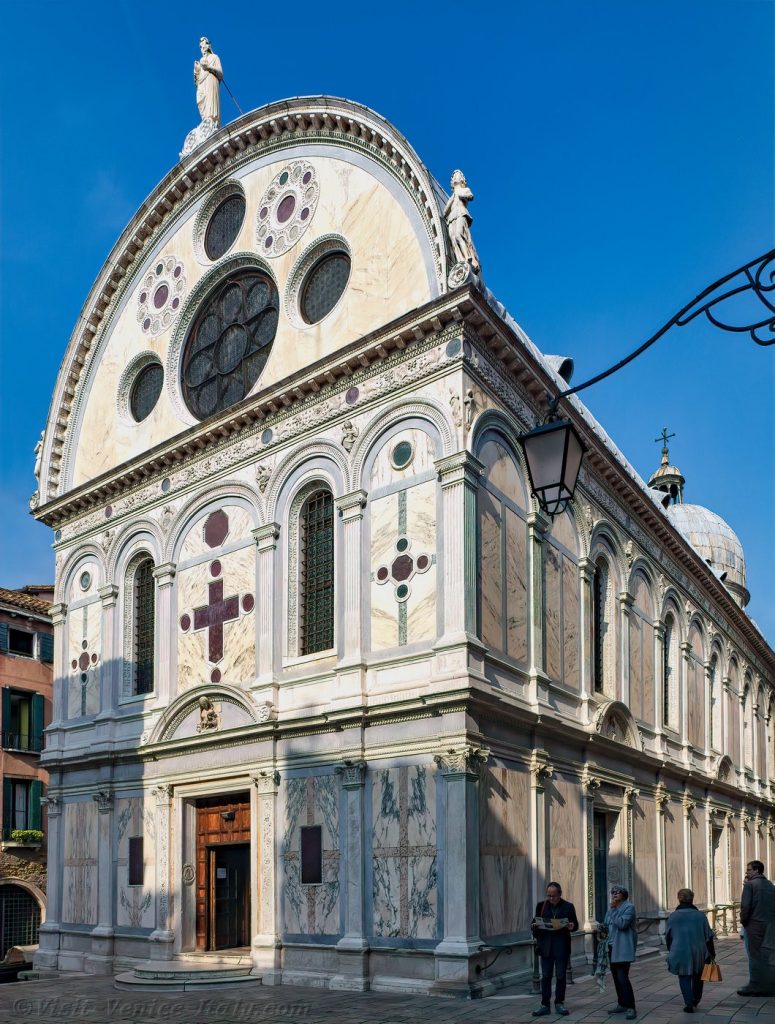
Discover Venetian Architecture on a Guided Walking Tour with Gondola Ride
So, what’s the best way to explore Venetian Architecture? Simple! To truly immerse yourself in the architectural wonders of Venice, consider joining the Venice Walking Tour with Gondola Ride. This small-group experience offers an expert-led exploration of some of the city’s most iconic sights. Including the majestic St. Mark’s Basilica and the charming backstreets often missed by casual visitors. Along the way, your knowledgeable guide will shed light on the distinct styles of Venetian architecture—from Byzantine domes to Gothic arches. The tour finishes with a classic gondola ride, offering a unique view of the city’s palazzos from the water. Just as they were meant to be seen. It’s a perfect way to experience Venice’s architectural splendor from both land and canal; and to appreciate the layers of Venetian architecture that make this city so magical.

FAQs
Why should you take a guided tour of Venice?
You could walk around Venice on your own (i.e. literally get lost) and look up at the buildings and try to guess how the architecture may be significant. Or you can amble around with a local expert who will give you a true insider’s knowledge about some of Venice’s most important buildings and landmarks. This way you can put everything into a historical context. That’s a souvenir you can go home with and you’ll have this knowledge for a lifetime. And it will make your trip much more meaningful; especially when you can spot the details unique to Venetian architecture.
What time does the tour start and how long does it last?
The tour lasts for three hours—make sure you slip on your most comfortable walking shoes, and starts at 10am. Some days of the week there’s a second tour starting at 2pm. Ideal for a post-prandial stroll looking at Venetian architecture.
What is the best time to go to Venice?
Taking weather and crowd size into consideration. The best time to go to Venice is in the shoulder seasons—April and May, September and October. In the summer, temperatures can get into the 80s F and in winter as low as the 40s F. Also, one thing to keep in mind, a winter visit to Venice might have fewer tourists, but it’s also the rainier season when the city tends to flood on occasion.
Experience the best of Venetian Architecture—book your small-group guided walking tour with gondola ride here.
